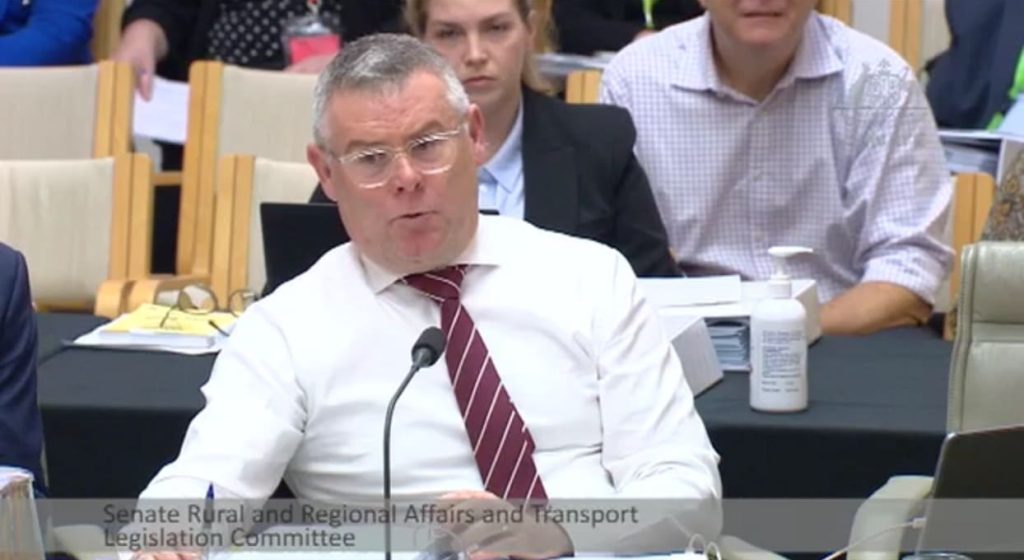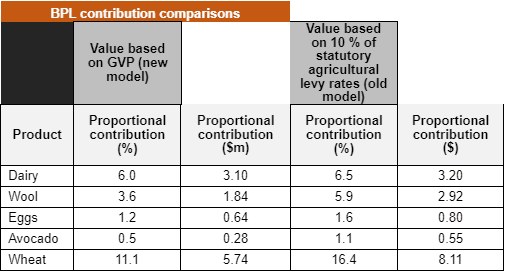
Minister for Agriculture Fisheries and Forestry Murray Watt at Senate Estimates today.
AGRICULTURAL commodity contributions to a proposed biosecurity protection levy have been cut by more than 30 percent under a new model announced by the Minister for Agriculture Fisheries and Forestry Murray Watt today.
In his opening statement at a Sneate Estimates hearing Mr Watt said the biosecurity protection levy will contribute just six percent of the total biosecurity funding model, or about $50 million.
He said his department has undertaken extensive consultation over the back half of last year including stakeholder meetings, a survey of industry as well as inviting submissions to be made.
“We’ve listened to that feedback and as a result, today I’m announcing that we’re changing the way the biosecurity protection levy is calculated to make it fairer and more transparent,” he said.
Mr Watt said the key feedback from industry on the proposed design included concerns about;
the equity and fairness of levy rates across different commodities;
association and confusion with the existing agricultural levies system; and
multiple imposition points for some commodities across the supply chain.
“Changes to the design of the levy have taken these issues into account.
“Rates will be set using a common and equitable basis for all industry sector products and goods and will not be set by reference to 2020-21 agricultural levy rates, as was originally proposed,” Mr Watt said.
“In addition, imposition of the levy will be tailored to individual products and goods to reduce multiple imposition points across a product’s supply chain.”
Ag commodity contributions slashed

The BPL was previously to be calculated based upon 10pc of existing agricultural levies paid by each industry.
Under the new model, for every 1pc of gross agricultural, fisheries and forestry production, an industry will contribute a total of $500,000 towards the biosecurity protection levy. This industry contribution will then be proportionately split between all producers in that industry.
A media statement from Mr Watt today outlined that that cattle industry, including live cattle exports, between 2019-20 and 2021-22, contributed around 18pc of the gross value of production for our agriculture, fisheries and forestry industries. Under the revised model, the sector will pay around 18pc of the total BPL, or around $9 million annually. This $9 million contribution will then be split proportionately between all producers in the cattle industry.
The wool industry was to be levied about 2.92 million under the 10pc model, but this has been cut by 37pc to $1.84 million under the new model.
The BPL model changes will ensure that sectors who previously would not have contributed to the levy because they do not collect levy payments, are now included in the contributions.
Under the new BPL model;
taxpayers will contribute around 44pc of total biosecurity funding, including an increase to the passenger movement charge;
importers will contribute about 48pc;
producers will contribute about 6pc; and
Australia Post will contribute about 2pc
Mr Watt said the biosecurity protection levy ensures that those who directly benefit from Australia’s strong biosecurity make a modest and direct contribution to ensure the biosecurity system is sustainably funded into the future.
“As a result of other changes that the Government has already introduced, both taxpayers and importers are already making a much larger direct contribution to biosecurity costs.
“Importers have already contributed almost $220 million towards biosecurity cost recovery, including $28 million more under the Albanese Government’s new model.”
Further details on the consultation are available at the Department of Agriculture, Fisheries and Forestry website at agriculture.gov.au/biosecurity-funding.

HAVE YOUR SAY